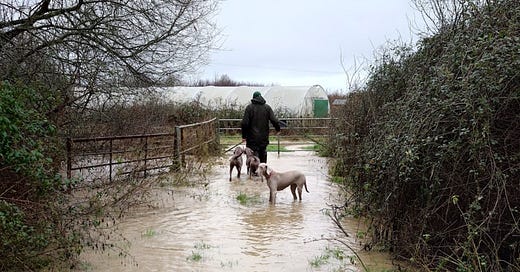Weather, population seeds and what to do with an apple glut
How can a decrease in a plant pathogen cause more drought? Why are population seeds more resilient? How do you make apple cider vinegar from peelings? And more
2025 hasn’t had the most auspicious start, with the weather throwing quite a tantrum. In the UK, we’ve faced a mix of snow and rain, leading to considerable disruption. Snow blanketed much of the country earlier in the month, followed by extensive flooding in parts of the Midlands. Here, on the Somerset/Dorset borders, we’ve experienced heavy rainfall, with over 40mm recorded in the past week, leaving our lower fields submerged. Fortunately, the allotments came through unscathed, albeit a tad waterlogged.
Meanwhile, across the Atlantic, parts of North America have been hit by a massive winter snowstorm, with the cold air mass extending as far south as Florida. This extreme weather is linked to the polar vortex, which I discussed back in November. If you missed it and want to read a simple explanation of what it is, you can find it here. And today, I have just seen the horrific footage of the wild fires in California. So weather conti…





